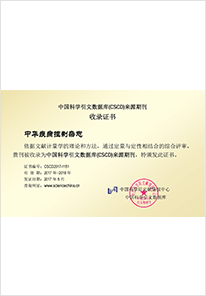2018 Vol. 22, No. 12
Display Method:
2018, 22(12): 1203-1206.
doi: 10.16462/j.cnki.zhjbkz.2018.12.001
Abstract:
2018, 22(12): 1207-1210,1215.
doi: 10.16462/j.cnki.zhjbkz.2018.12.002
Abstract:
2018, 22(12): 1211-1215.
doi: 10.16462/j.cnki.zhjbkz.2018.12.003
Abstract:
2018, 22(12): 1216-1220,1314.
doi: 10.16462/j.cnki.zhjbkz.2018.12.004
Abstract:
2018, 22(12): 1221-1224,1247.
doi: 10.16462/j.cnki.zhjbkz.2018.12.005
Abstract:
2018, 22(12): 1225-1228.
doi: 10.16462/j.cnki.zhjbkz.2018.12.006
Abstract:
2018, 22(12): 1229-1233.
doi: 10.16462/j.cnki.zhjbkz.2018.12.007
Abstract:
2018, 22(12): 1234-1237.
doi: 10.16462/j.cnki.zhjbkz.2018.12.008
Abstract:
2018, 22(12): 1238-1242.
doi: 10.16462/j.cnki.zhjbkz.2018.12.009
Abstract:
2018, 22(12): 1243-1247.
doi: 10.16462/j.cnki.zhjbkz.2018.12.010
Abstract:
2018, 22(12): 1248-1251.
doi: 10.16462/j.cnki.zhjbkz.2018.12.011
Abstract:
2018, 22(12): 1252-1256.
doi: 10.16462/j.cnki.zhjbkz.2018.12.012
Abstract:
2018, 22(12): 1257-1260.
doi: 10.16462/j.cnki.zhjbkz.2018.12.013
Abstract:
2018, 22(12): 1261-1264.
doi: 10.16462/j.cnki.zhjbkz.2018.12.014
Abstract:
2018, 22(12): 1265-1269.
doi: 10.16462/j.cnki.zhjbkz.2018.12.015
Abstract:
2018, 22(12): 1270-1273.
doi: 10.16462/j.cnki.zhjbkz.2018.12.016
Abstract:
2018, 22(12): 1274-1277.
doi: 10.16462/j.cnki.zhjbkz.2018.12.017
Abstract:
2018, 22(12): 1278-1282.
doi: 10.16462/j.cnki.zhjbkz.2018.12.018
Abstract:
2018, 22(12): 1283-1286.
doi: 10.16462/j.cnki.zhjbkz.2018.12.019
Abstract:
2018, 22(12): 1287-1290.
doi: 10.16462/j.cnki.zhjbkz.2018.12.020
Abstract:
2018, 22(12): 1291-1296.
doi: 10.16462/j.cnki.zhjbkz.2018.12.021
Abstract:
2018, 22(12): 1297-1299.
doi: 10.16462/j.cnki.zhjbkz.2018.12.022
Abstract:
2018, 22(12): 1300-1302.
doi: 10.16462/j.cnki.zhjbkz.2018.12.023
Abstract:
2018, 22(12): 1303-1305.
doi: 10.16462/j.cnki.zhjbkz.2018.12.024
Abstract:
2018, 22(12): 1306-1308.
doi: 10.16462/j.cnki.zhjbkz.2018.12.025
Abstract:
The characteristics of new reported foreign and Chinese HIV/AIDS patients in Yunnan province in 2016
2018, 22(12): 1309-1311.
doi: 10.16462/j.cnki.zhjbkz.2018.12.026
Abstract:
2018, 22(12): 1312-1314.
doi: 10.16462/j.cnki.zhjbkz.2018.12.027
Abstract:
2018, 22(12): 1315-1316.
doi: 10.16462/j.cnki.zhjbkz.2018.12.028
Abstract:


 Email alert
Email alert RSS
RSS Abstract
Abstract PDF
PDF





